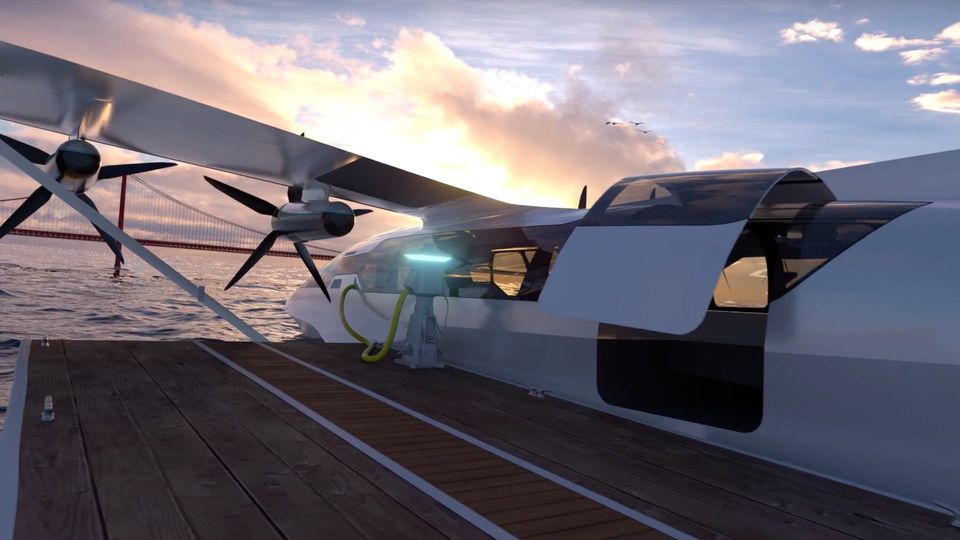XBW-1 transporter
US Air Force orders blended wing body design flying flounder
A wide fuselage and small wingtips characterize the BWB concept
© US Air Force
With BWB jets, the fuselage merges seamlessly into the wings, so consumption should be massively reduced. Small models of such aircraft already exist, and now the Pentagon has ordered an airworthy jet. But China is also working on a similar jet, the BWB-300.
Low consumption
The blended wing body (BWB) design lies between the classic structure of a tubular fuselage with clearly defined wings and the concept of a flying wing, as first seen with the Horten Ho 229 (The Horten Ho 229 – the most mysterious aircraft of the Nazis). Blended wing body means that fuselage and wings merge smoothly into one another. This shape is also being discussed for passenger aircraft. Northwestern Polytechnical University in China tested a scale aircraft of a blended wing body concept in early 2023, a mockup of the BWB-300 (Civil Flying Wing – China launches blended wing body jet) In 2007, Boeing launched the X-48B- Demonstrator airborne. In 2020 Airbus presented the model of the Maverick (Airbus Maveric – this flying wing already flies as a model). They were all miniature models.
Such aircraft offer much more transport space and they can carry heavy loads. “Blended wing body aircraft have the potential to significantly reduce fuel requirements and increase global range,” said Air Force Secretary Frank Kendall national security strategy.”
Dual use aircraft
In addition to military use as a transporter and tanker aircraft, civil use is also planned for the concept. The low consumption of the BWB concept should make more sustainable aviation possible. The concept is said to be at least 30 percent more aerodynamically efficient than a Boeing 767 or an Airbus A330. Today’s military tanker and transport aircraft are based on these commercial aircraft. With innovative engines and lightweight composite materials, it is hoped that consumption will be reduced by more than half.
“There are four forces of flight: lift, weight, drag and thrust. We have a structure and a slim airframe, and it’s made from composite materials – state-of-the-art technology,” said Tom O’Leary, co-founder and CEO of JetZero. “When we combine those net effects, they’re phenomenal… and that was lift, weight and drag. And then we think about thrust. What we can achieve with a highly efficient airframe, which is that we need less thrust, means, that we’ve actually gotten into this virtuous circle where we can use a smaller engine, which in turn has less weight and less drag.”
The BWB design also plays a role in a possible confrontation with China, the long distances in the Pacific increase the demands on the transport aircraft. JetZero also shows renderings with windows and doors typical of civil aircraft. JetZero anticipates that the BWB concept will be the basis for a very efficient 250-300 passenger civil aircraft. Locating the engines above the flounder-shaped fuselage will reduce noise pollution on the ground.
The concept also has disadvantages
However, more efficient engines and lighter materials will also be used in new jets that follow a different design. The original advantage of the BWB design is that the entire fuselage and only the wings generate lift. But that brings with it a problem: In order to use the lift optimally, the aircraft must glide, it must not fly too fast. However, this also means that the operating hours increase with the same distance covered. Passengers would be in the air noticeably longer. As the passengers move away from the centerline of the fuselage, they suffer much more from the fluctuations of course changes. Their seats then go up and down, like a fairground ride. A concept like the Airbus Maverick, in which the passengers sit in the wings, is therefore not very realistic.
And last but not least, today’s terminals are not designed for this type of aircraft, they would have to be adapted accordingly. Another China-specific problem arises for the BWB-300. A network for magnetic levitation trains is currently being built there, these trains travel faster than a BWB jet would fly.
Source: war zone
Also read:
The Horten Ho 229 – the most mysterious plane of the Nazis
Civilian flying wing – China launches “blended wing body” jet
Airbus Maveric – this flying wing already flies as a model
This air-to-water taxi is based on the design of Hitler’s rocket builders




